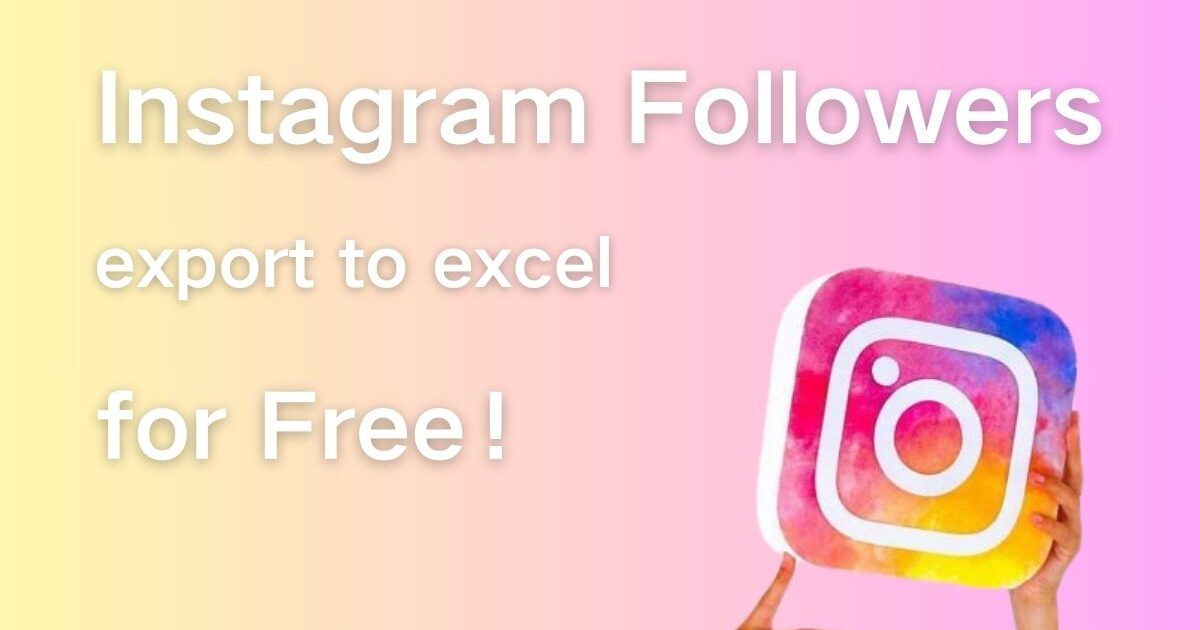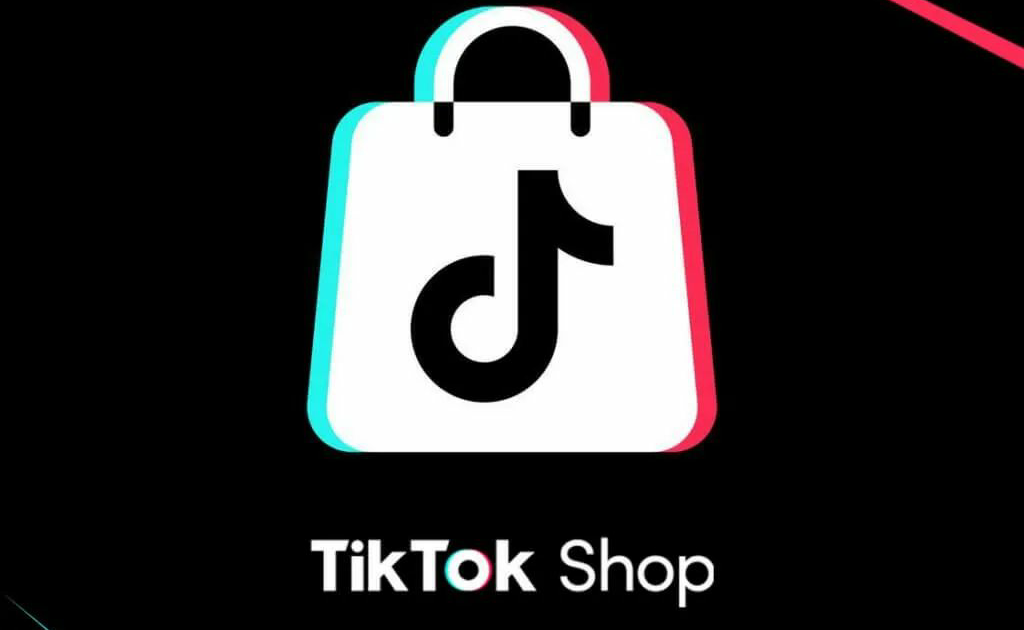Understanding Facebook Advertising Marketing: A Complete Guide
In today's ever-changing digital marketing landscape, businesses that want to stand out and succeed must embrace innovative marketing strategies. Facebook ads marketing, as one of the most effective digital marketing methods in recent years, has provided businesses with powerful tools to reach target audiences, increase brand awareness, and drive sales.
With over 2 billion active users, Facebook is one of the largest social media platforms in the world. This massive user base provides businesses with immense marketing potential. Through Facebook ads, businesses can target their ads with precision based on factors such as their target audience's demographics, interests, and behaviors, ensuring that their ads reach the people most likely to be interested in their products or services.
To better understand and use Facebook ads marketing services, here are some explanations of common terms:
Facebook Ads
Facebook Ads are paid advertisements that businesses can create on the Facebook platform to promote their products, services, or brand. It's a powerful digital marketing tool that allows businesses to reach a massive audience with laser focus. Here's a breakdown of what Facebook Ads are all about:
- Reaching the Right People: Facebook boasts over 2 billion active users, providing a vast potential customer base for businesses. With Facebook Ads, you can target your ads to a very specific audience based on demographics (age, location, income), interests (hobbies, activities), and behaviors (past purchases, website visits). This ensures your message reaches the people most likely to be interested in what you have to offer.
- Variety of Ad Formats: Facebook Ads come in a variety of formats to suit your marketing goals. There are image ads for grabbing attention with visuals, video ads for showcasing products or telling stories, carousel ads for displaying multiple products within a single ad, and even Messenger ads to connect directly with potential customers through chat.
- Campaign Objectives: Facebook Ads aren't one-size-fits-all. You can set specific goals for your campaign, such as increasing brand awareness, driving website traffic, generating leads, or boosting sales. The platform then optimizes your ad delivery based on your chosen objective.
- Measuring Success: With Facebook Ads, you can track the performance of your campaigns in detail. You'll see metrics like impressions (how many times your ad was seen), clicks (how many times users clicked on your ad), and conversions (how many times users took a desired action, like making a purchase). This data allows you to see what's working and what's not, so you can refine your campaigns for better results.
- Cost-Effective Marketing: Facebook Ads offer a flexible budgeting system. You can set a daily or total budget for your campaign, and you only pay when someone takes a specific action, like clicking on your ad (cost-per-click) or completing a purchase (cost-per-acquisition). This allows you to control your spending and get the most out of your marketing budget.
In short, Facebook Ads provide businesses with a powerful and targeted way to reach their target audience on the world's largest social media platform. By creating engaging ads, setting clear goals, and tracking your results, you can leverage Facebook Ads to achieve your marketing objectives and grow your business.
Target Audience
A Facebook Ads target audience is the specific group of people you want to reach with your ad campaign. Since Facebook has a wealth of data about its users, you can create very detailed targeting criteria to reach the people most likely to be interested in your products or services.
Here are some of the key elements of how to set up Facebook Ads target audience:
Demographics
You can target your audience based on factors such as age, gender, location, language, education level, relationship status, and work. For example, if you sell sneakers, you could target your ads to 18-35-year-old males and females who are interested in sports.
Interests
You can target your audience based on the pages people like, the interests they follow, and the activities they engage in. For example, if you run a pet store, you could target your ads to people interested in pets, and further refine that to people who like cats or dogs.
Behaviors
You can target your audience based on people's actions on Facebook, such as people who have recently purchased similar products or people who have visited your website. This type of retargeting allows you to show ads to people who have previously interacted with your business, which can increase conversion rates.
Custom Audiences
You can create custom audiences using your own customer data, such as email lists or website visitor data. This allows you to show ads to existing customers or people who have shown a strong interest in your brand.
By combining these targeting options, you can create highly relevant audiences that can improve your ad campaign's return on investment (ROI).
Here are some tips for Facebook Ads target audience:
- Create multiple audiences: Don't put all your eggs in one basket. Try creating multiple audiences and test which ones respond best to your ads.
- Use exclusions: You can exclude audiences that you don't want to see your ads, such as people who are unlikely to be interested in your products or services.
- Keep your audiences relevant: While you can create very specific audiences, make sure they're still large enough for your ads to get enough exposure.
- Update your audiences regularly: As your business grows, your target audience may change. Remember to update your audience settings regularly.
By effectively using Facebook Ads target audience features, you can ensure that your ads reach the people most likely to be interested in your business.
Facebook Pixel
Facebook Pixel is an analytics tool that helps you understand what actions users take on your website and measure ad performance. By installing the Pixel code, you can:
- Ensure ads are shown to the right audience: You can target ads to specific users based on their demographics, interests, and behaviors.
- Find new customers: You can track users who have visited your website and create remarketing campaigns for them.
- Increase sales: You can set up automatic bidding to reach users who are more likely to take key actions (such as completing a purchase).
- Measure ad performance: You can better understand the impact of your ads by measuring how users behave after seeing them.
How to set up Facebook Pixel
- Create a Facebook Ads account.
- In Facebook Ads Manager, click "Events Manager".
- Click "Create Pixel".
- Enter your website information.
- Copy and paste the Pixel code into your website code.
How Pixel works
When a user visits your website, the Pixel code fires and collects data about their behavior. This data includes the pages they view, the links they click, and the actions they take. This data is then sent back to Facebook Ads Manager for you to view and analyze.
Facebook pixel standard events
The 17 standard Facebook pixel events for which you can simply copy and paste Facebook event code are:
- Purchase: Someone completes a purchase on your website.
- Lead: Someone signs up for a trial or otherwise identifies themselves as a lead on your site.
- Complete registration: Someone completes a registration form on your site, such as a subscription form.
- Add payment info: Someone enters their payment information in the purchase process on your website.
- Add to cart: Someone adds a product to their shopping cart on your site.
- Add to wishlist: Someone adds a product to a wishlist on your site.
- Initiate checkout: Someone starts the checkout process to buy something from your site.
- Search: Someone uses the search function to look for something on your site.
- View content: Someone lands on a specific page on your website.
- Contact: Someone contacts your business.
- Customize product: Someone selects a specific version of a product, such as choosing a certain color.
- Donate: Someone makes a donation to your cause.
- Find location: Someone searches for your business’s physical location.
- Schedule: Someone books an appointment at your business.
- Start trial: Someone signs up for a free trial of your product.
- Submit application: Someone applies for your product, service, or program, such as a credit card.
- Subscribe: Someone subscribes to a paid product or service.
You can also add more details to standard events using extra bits of code called parameters. These allow you to customize the standard events based on factors like:
- How much a conversion event is worth
- Currency
- Content type
- Predicted long-term value
For example, you could use the Facebook tracking pixel to record views of a specific category on your website, instead of tracking all views. Perhaps you want to separate dog owners from cat owners based on which sections of your pet supply website they viewed.
Ad Campaign
An FB Ad Campaign (Facebook Ad Campaign) is a group of targeted advertisements you create on the Facebook advertising platform to achieve a specific marketing objective. It acts as an umbrella under which you set your goals, define your target audience, design your ads, and manage your budget.
Ad Set
An FB Ad Set (Facebook Ad Set) is a group of ads within a larger Facebook Ads campaign that share the same targeting options, budget, schedule, and bidding strategy.
Ad Creative
Facebook Ad Creative refers to the visual and textual components that make up your Facebook advertisement. It's essentially the "face" of your ad, the part that users see scrolling through their Facebook feeds or browsing other placements on the platform. Strong ad creative is crucial for grabbing attention, conveying your message effectively, and ultimately driving results for your campaign.
Facebook Ads Performance
Facebook Ads Performance measures the number of times your ads achieved a result based on your selected objectives and settings.
- Usage: Performance metrics indicate how your ad campaign is performing against your chosen business goals and settings. You can use these metrics to compare the performance of similar ad campaigns and identify opportunities to improve results.
- Note: Performance metrics may not reflect how you are paying for your ads, depending on your ad campaign and ad account settings. For example, if you select conversions as your objective, the performance metric will count the number of completed purchases, but you may be paying for impressions your ads receive.
- Calculation: This metric is calculated based on the number of results achieved according to your settings at the ad campaign level. For example, if you select conversions as your ad campaign objective, the performance metric will show the number of purchases made by users who viewed your ad.
For performance where there is a time lag between a user viewing an ad and taking an action, Facebook uses a default attribution window to count results that occur within 1 day of viewing an ad or within 28 days of clicking on an ad. If you change your ad account's attribution window settings, the system will count results within the attribution window you set.
Impression
The number of times your ad is displayed on screens. This metric is affected by cost per impression (CPI). The higher the CPI, the fewer impressions you will get for the same budget.
- Usage: Impressions are a commonly used metric in the online marketing industry. Impressions are designed to measure how often your target audience sees your ad.
- Calculation: An impression is counted each time an ad first appears on a user's screen. (For example, if an ad is displayed on a user's screen and the user scrolls down and then back up to view the ad again, it is counted as one impression. If an ad is displayed on a user's screen twice during the day, it is counted as two impressions.) Since the calculation method for impressions is the same as for ads that contain images or videos, the video in an ad is counted as an impression even if it does not play. Although this method of counting video impressions differs from the industry standard for video ads, it ensures consistency in reporting impressions if the ad contains both video and images.
In some cases, if it cannot be determined whether an ad will be displayed on the screen, such as when using a non-smartphone, an impression is counted when the ad is delivered to the device.
If impressions come from invalid traffic that we detect (such as non-human sources like bots), they are not counted.
(Reach is often smaller than impressions because the same user may see your ad multiple times.)
Conversion
A conversion occurs when a user takes a desired action, such as making a purchase or signing up for a newsletter.
Reach
The number of unique users who have seen your ad at least once. Reach is different from impressions, which can count the same user multiple times if they see the ad more than once.
Reach can be used to measure how many people have been exposed to your message during your ad campaign. Users may not always click on your ad, but they may still interact with your business after seeing your message. Reach can be affected by your bidding, budget, and targeting.
Frequency
The average number of times each user sees an ad.
- Usage: Showing your marketing message to your target audience multiple times can help to increase brand awareness and recall. The average frequency for each ad set can be 1 to 2 times, or it can be higher, depending on your budget, audience size, and scheduling.
- Calculation: Impressions divided by reach.
It is important to monitor your ad frequency, performance, and ad relevance diagnostics to ensure that the same users are not seeing your ads too often during your campaign. If ad performance declines as frequency increases, it is likely that your target audience is becoming fatigued with the ad, and it may be a good idea to adjust your ad creative or targeting.
Budget
The maximum amount you want to spend on an ad set or campaign. This can be an average daily spend or a total spend for the duration of the campaign (you need to set a start and end date). (This data column is not applicable to ads, but only to ad sets and campaigns)
Spend
The estimated total cost of an ad campaign, ad set, or ad during the campaign period. (This metric is an estimate.)
- Usage: You can use total spend to compare to your maximum budget to see how much you have spent in the period you are viewing. This includes both billed amounts and unbilled amounts that are eligible for billing.
- Calculation: This metric is used as the numerator for calculating all cost per action or cost per goal metrics. If your ad is currently running, these numbers are just estimates because it can take up to 48 hours for the system to process ad results.
Cost Per Conversion (CPA/CPP)
The average cost per result generated by your ad spend.
- Usage: CPA indicates how efficiently you are spending money in achieving your advertising campaign goals. You can use this metric to compare the performance of different ad campaigns and identify opportunities for improvement. This metric can help you determine bidding for future ad sets. This metric is influenced by many factors, such as bidding strategy, target audience, optimization type, ad creative and text, and placement.
- Calculation: This metric is calculated by dividing the total cost by the number of results.
By understanding these common terms, businesses can get started with Facebook ads marketing and start using this powerful platform to reach their target audiences, achieve their marketing goals, and grow their businesses.
Cost Per Impression (CPM)
The average cost for every 1,000 impressions.
- Usage: CPM is a common metric used in the online advertising industry to measure the cost-effectiveness of an ad campaign. It is often used to compare the performance of different ad placement options and ad campaigns.
- Calculation:CPM is calculated by dividing the total cost of an ad campaign by the number of impressions, and then multiplying by 1,000. (For example, if you spend $50 and get 10,000 impressions, your CPM would be $5.)
Link Clicks
The number of times a link within an ad is clicked (leading to destinations or experiences both inside and outside of Facebook). For ads that promote browsing of Instagram business pages, link clicks include the number of times the ad title or comments are clicked to direct users to the advertiser's business page.
- Usage: Link clicks can be used to measure audience interest in your ads. Digital advertisers often use click-through rates (CTRs) as a metric to gauge the success of online advertising campaigns.
- Calculation: This metric counts any link clicks in any ad area that link to an ad's destination or experience. For example, if a user clicks on the image of an ad or they click on the call-to-action button in the same ad, this would be counted as one link click.
To better understand what happens after users click on your ads, you can compare link clicks to other metrics. For example, you can compare link clicks to landing page views to see how often users are actually visiting your landing page after clicking on your ad.
These destinations may be outside of Facebook or they may be Facebook-owned experiences or destinations. For example, they might include ad links that go to the following destination pages or experiences:
- Websites
- App stores or app deep links
- Phone calls
- Messages
- Maps/Directions
- Facebook full-screen ads
- Facebook lead forms
- Facebook Marketplace
- Playable ad experiences
- Videos with "Watch and Browse" experience enabled
- Videos from other websites (including videos embedded in Dynamic Message Ads but that come from video platforms like YouTube or Vimeo)
- Link Clicks for Instagram Profile Visits
For Instagram ads that include a "Visit Instagram Profile" button, link clicks will be counted when users click on the profile name in the title or comments, as these destinations are consistent with the destination of the "Visit Instagram Profile" button.
(The difference between link click rate and link clicks-unique users is that the same user may click on our links multiple times. Similarly, additional metrics for unique users exist for metrics like add to cart and initiate checkout.)
Link Click-Through Rate (CTR)
The percentage of people who click on a link after seeing an ad.
- Usage: CTR represents the number of link clicks your ad receives compared to the number of times it is shown. Online advertisers often use this metric to understand how well their ads are driving traffic to their websites and other landing pages.
- Calculation: This metric is calculated by dividing link clicks by impressions. The lower limit for this metric is 1.5%. If it falls below 1.5%, try using more engaging creative or targeting a different audience.
Cost Per Link Click (CPC)
The average cost for each link click.
- Usage: CPC is the average cost you pay for each link click. It is a metric used in the online advertising industry to measure baseline ad performance and efficiency.
- Calculation: This metric is calculated by dividing total cost by link clicks. The upper limit for this metric is 1.0. If it exceeds this value, consider optimizing or shutting down your ads.
Landing Page Views
The number of times a user clicks on an ad link and successfully loads the target webpage or instant experience. You need to create a Facebook Pixel code to get landing page view reports.
- Usage: Landing page views can help you understand how many times users load your website or instant experience after clicking on your ad. You can compare landing page views to link clicks to see how many people clicked on your ad but left before the website or instant experience loaded fully.
- Calculation: A landing page view is counted when a user loads a webpage or instant experience after clicking on an ad, and your Pixel code triggers a PageView, PixelInitialized, or ViewContent event. The PageView and PixelInitialized events are captured automatically by the Pixel code, without any additional setup.
The webpage must have a Pixel code from your ad account installed for the landing page view to be counted. If the webpage linked to in the ad (e.g., a redirect page) does not have a Pixel code installed, but the Pixel code triggers a PageView, PixelInitialized, or ViewContent event within 3 minutes of the initial ad click, the landing page view will still be counted.
Landing Page View Cost Per View
The average cost for each landing page view.
Calculation: This metric is calculated by dividing total cost by landing page views. The upper limit for this metric is 1.0. If it exceeds this value, consider optimizing or shutting down your ads.
Adds to Cart (ATC)
The number of add-to-cart events driven by your ads, based on information from one or more of your connected Facebook business tools.
Calculation: This metric counts the number of add-to-cart events driven by your ads, as tracked by one of your Facebook business tools (such as Facebook Pixel, app SDK, or offline event sets).
Adds to Cart Cost Per Add
The average cost for each add to cart.
Calculation: This metric is calculated by dividing total cost by the number of add-to-cart events.
Initiates Checkout
The number of initiate checkout events driven by your ads, based on information from one or more of your connected Facebook business tools.
Calculation: This metric counts the number of initiate checkout events driven by your ads, as tracked by one of your Facebook business tools (such as Facebook Pixel, app SDK, or offline event sets).
Initiates Checkout Cost Per Initiate
The average cost for each initiate checkout.
Calculation: This metric is calculated by dividing total cost by the number of initiate checkout events.
Adds Payment Info
The number of add payment info events driven by your ads, based on information from one or more of your connected Facebook business tools.
Calculation: This metric counts the number of add payment info events driven by your ads, as tracked by one of your Facebook business tools (such as Facebook Pixel, app SDK, or offline event sets).
Adds Payment Info Cost Per Add
The average cost for each add payment info.
Calculation: This metric is calculated by dividing total cost by the number of add payment info events.
Purchases
The number of purchases driven by your ads, based on information from one or more of your connected Facebook business tools.
Calculation: This metric counts the number of purchase events driven by your ads, as tracked by one of your Facebook business tools (such as Facebook Pixel, app SDK, or offline event sets). This metric also counts the number of purchase events driven by Facebook ads that occur on Facebook-owned properties (such as Marketplace, Instagram Shopping, or in-stream ads).
Cost Per Purchase (CPP)
The average cost for each purchase. If you are using a conversion objective, this is the same as the cost per conversion mentioned earlier.
Calculation: This metric is calculated by dividing total cost by the number of purchases.
Purchase Conversion Value
The total purchase value tracked based on your conversion objective.
Calculation: This metric is calculated by adding up the value parameters you set for your purchase conversion standard event.
Return on Ad Spend (ROAS) - Purchase
The total return on ad spend for your ads that drive purchases, based on information from one or more of your connected Facebook business tools.
Calculation: Purchase conversion value divided by total ad spend.
Average Video View Duration
The average length of time that videos are viewed, including replay time across individual impressions.
Calculation: The total video watch time divided by the total number of video plays (including replays).
3-Second Video Views
The number of times a video is played for at least 3 seconds or almost to completion (if the video is less than 3 seconds long). We count each video view separately for each ad impression, and we do not count any video replays.
Calculation: When a video is played for at least 3 seconds, or for 97% of its total duration (if it is less than 3 seconds long), we count this as a 3-second video view. We do not count any replay time of the video within a single impression. For example:
- If a user watches a 2-second video for 1.94 seconds, or a 3-second video for 2.91 seconds, we count this as a 3-second video view.
- If a user watches a 3-second video for 2 seconds, then rewinds and watches the first 2 seconds again, we do not count this as a 3-second video view because replays are not counted.
- Your 3-second video views should be between 40% and 60% of your total video impressions. If your videos are not reaching this benchmark, try optimizing the first 3 seconds of your video creative to be more engaging and watchable.
10-Second Video Views
The number of times a video is played for at least 10 seconds or almost to completion (if the video is less than 10 seconds long). We count each video view separately for each ad impression, and we do not count any video replays.
Calculation: When a video is played for at least 10 seconds, or for 97% of its total duration (if it is less than 10 seconds long), we count this as a 10-second video view. We do not count any replay time of the video within a single impression.
25% Video View Completions
The number of times a video is played to 25% of its length, including times when the user skips to that point.
Calculation: When a user watches to 25% of the length of a video, we count this as a completion. This includes users who watch from the beginning of the video to the quarter-way point, as well as users who skip to the 25% mark and start watching from there.
50% Video View Completions
The number of times a video is played to 50% of its length, including times when the user skips to that point.
Calculation: When a user watches to 50% of the length of a video, we count this as a completion. This could include users who watch from the beginning of the video to the halfway point, as well as users who skip to the 50% mark and start watching from there.
75% Video View Completions
The number of times a video is played to 75% of its length, including times when the user skips to that point.
Calculation: When a user watches to 75% of the length of a video, we count this as a completion. This could include users who watch from the beginning of the video to the three-quarters point, as well as users who skip to the
95% Video View Completions
The number of times a video is played to 95% of its length, including times when the user skips to that point.
Calculation: When a user watches to 95% of the length of a video, we count this as a completion. This includes users who watch from the beginning of the video to the 95% mark, as well as users who skip to the 95% mark and start watching from there.
100% Video View Completions
The number of times a video is played to 100% of its length, including times when the user skips to that point.
Calculation: When a user watches to 100% of the length of a video, we count this as a completion. This includes users who watch the entire video from the beginning, as well as users who skip to the 100% mark.





